What to look for when buying a used tractor
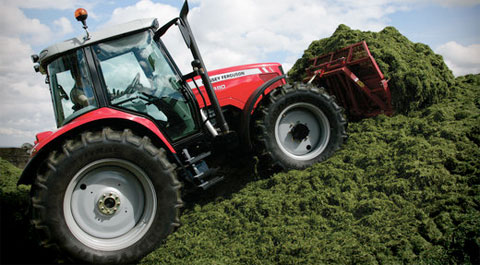
Purchasing a used tractor can be a pitfall-laden process for even the most seasoned buyer, with a wide range of private sellers and dealers offering an equally wide range of variously-specified models in a multitude of conditions.
Farmers Weekly and its FWi website both offer good sources for those seeking used machinery, but it’s hard to split the good and the bad from a few words and a photo.
Here, with the help of Kent used tractor specialist Mark Hellier, we provide a few pointers to not only help the uninitiated, but also remind experienced buyers of the little things that can be overlooked when assessing a potential purchase.
We’ve used a good example of a mid-range arable/stock tractor, a 2008 four-cylinder/135hp Massey Ferguson 5480 with 3,400 hours on the clock, as our case study machine. one that could find a place as a trailer hauler and runaround on a large farm, or the main tractor on a smaller unit.
Almost all of this advice, though, applies to all makes and models.
Choosing a used machine worth journeying to see has been made much easier with the inclusion of photos with almost all classified and dealer adverts in Farmers Weekly. But our FWi website provides an even more detailed and up-to-date way of selecting secondhand equipment.
On the Farmers Weekly FWi homepage at www.fwi.co.uk, look for the third of the red tabs across the top of the page, labelled Buy & Sell.
If you are prepared to search through a wide range of ads, you can then use the Quick Search feature in the middle of the page to enter what you are looking for (eg tractor) and in which area (eg Leeds).
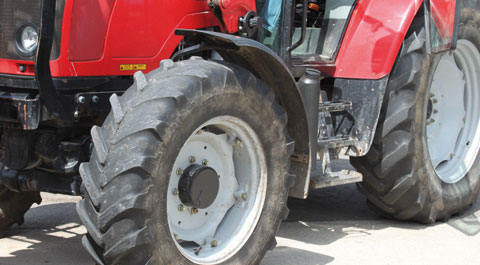
For a more accurate and detailed search, though, there is a drop-down “Advanced Search” menu on the left-hand side of the page. From this,select the type of machine you are looking for (eg tractors), the sub category (eg agricultural tractors), the make you are interested in, the price range and the location.
If you would like a wider search – for example, you want to search within a price bracket but are not concerned with any particular make – then as long as at least one of the options in one of these drop-down boxes has been selected, the others do not have to be. But the more that are selected, the more refined the search will be.
The system will then show a selection of machines according to the criteria specified, with each one described according to price, condition, location, date added and further details, plus a photo, including further detailed photos if the seller has added them.
Always view the machine before agreeing to the handover of any money – even a deposit to secure it – and find out as much as possible about your seller.
If you are dealing with a private vendor, never agree to view the tractor at anywhere other than his own premises. It goes without saying that the same applies to a dealer tractor.
When arriving at the seller’s address, first impressions of the premises and the other stock can often reveal a lot. And never rush into a purchase – don’t buy the first machine you see.
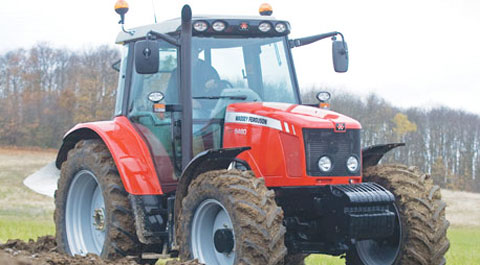
Investing £50 in an HPI check for the tractor will be money well spent, especially when bearing in mind the increased level of machinery theft that has become prevalent.
If you’ve happy that all is well, only then should you think about making the purchase – but not until making the following checks.
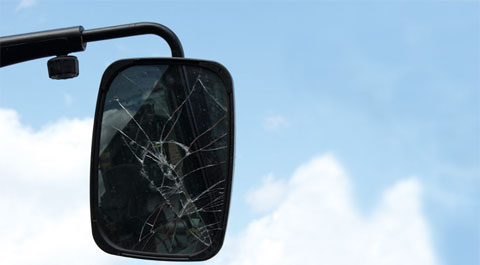
Firstly, take a good look around the tractor and assess its overall condition. Damaged tinwork and/or paint, worn tyres, broken mirrors and torn seats tell their own story in terms of how well cared-for the machine has been.
Be wary of painted tractors, particularly if the job hasn’t been done well – it may be a case of a seller trying to make a sow’s ear look like a silk purse.
Genuine filters and replacement parts are a good sign a machine has been cared for, as is a stamped service record, although this is too often a rarity.
Start the machine, ensure all of the dashboard lights – such as the oil pressure warning – go out and let it run for a while, listening for any unusual sounds from the engine.
Feel the smoke discharge from the breather pipe underneath the tractor, which should be dry.
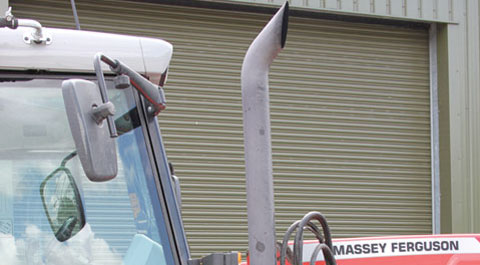
With modern emissions-regulated engines it’s hard to tell as much from the colour of the engine smoke as was once possible, but if it looks blue, then it’s burning oil, and the engine’s piston rings or valve guides are likely to be the source of the problem, while black smoke means unburnt diesel, and the fault is likely to lie with the injectors or fuel pump.
Either way, if you choose to take on the tractor, the cost of sorting these issues will need to be taken into account.
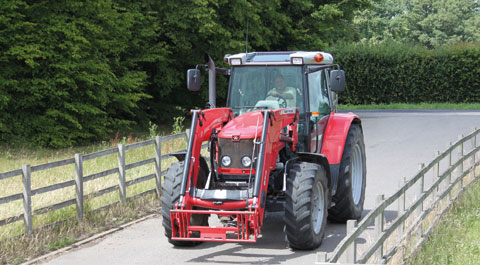
Now that the engine has been idling and has warmed up a little, drive the tractor in all gears, in both directions, and at speed, listening for any unusual transmission noises.
Ensure the clutch and all gears engage smoothly and the shuttle, if fitted, works as it should – some units offer a facility to allow the speed of the forward/reverse (and vice versa) change to be modulated, to make it smoother.
At the same time, when on the move work the steering through its full range, and check the brakes for stopping power and noise.
They should also be examined for evidence of wear and replacement. Be wary of a young tractor with new-looking discs – it could be a sign that it has worked hard on heavy haulage job, or with an unbraked trailer.
If the tractor is fitted with four-wheel drive, as the vast majority of modern agricultural tractors now are, check that it engages and disengages correctly. This not only means making sure that the system switches on and off in the right way, but also that it is actually putting power to the front axle.
To do this where the ability to get the axle off the ground is not available, drive the tractor gently up against a solid, immovable object such as a loading ramp, and engage the system, whereupon the fact that drive is getting to the front wheels should be evident.
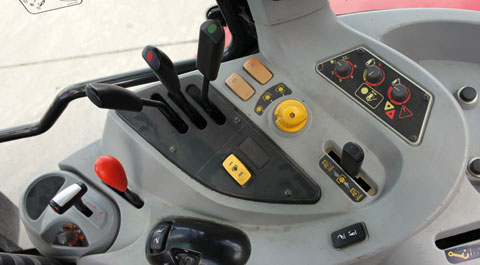
While the tractor is still running, check all of the operating controls, including the linkage, spool valves and pto. Ensure that the air conditioning, if fitted, works correctly and blows cold – a service and refrigerant top-up may be required if not.
Also check all lights and electrical items, such as an electronic dash if fitted, as these can be expensive to repair or replace.
And remember that just as analogue hour meters can be clocked, digital ones may also have been tampered with by if the machine has been through unscrupulous hands – not necessarily those of the current owner.
If bulbs on any working or road lights have blown, any seller worth his salt should have sorted such a simple issue, so more serious electrical gremlins may be responsible if such an issue is evident.
Ask for it to be sorted. Even fuse issues can be a pain to put right.
Check the pick-up hitch by unlatching it, dropping it down fully and checking for any play and wear. Ensure that when lifted again it latches correctly.
While at the rear, if possible, put something on the linkage. Check that the external linkage controls work as they should, and examine the cross shaft carefully. If possible, get a pry bar underneath it to check for excessive play.
The units on many tractors are prone to wear if they have been used for a lot of heavy lifting, and they are not cheap to replace.
Check the spool valves for damage or excessive oil leakage, and listen out for any hissing when not engaged.
If possible, connect up an implement such as a trailer to each one to check that they, and the trailer brakes, are all working as they should.
Whether the tractor has been used for loader work or not, at the front end it pays to look closely at the front axle.
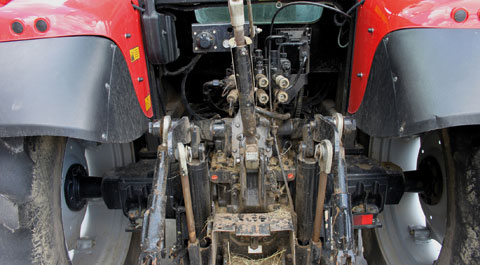
Check the hub bearings and the axle pivot for obvious signs of wear and play, and be wary if serious issues are obvious, as they could be expensive to address.
Knuckle joints on the end of the power steering ram, and the axle’s top and bottom pivot bearings – especially on loader tractors – should also be inspected.
Suspended front axles have done a great deal to improve driver comfort, but they are a considerable extra investment on a brand new tractor, so should have been looked after by any decent driver.
Check the general wear of the unit, and particularly the bushes and grease points. There are a lot of the latter – as many as 14 on some units – and they can often get neglected.
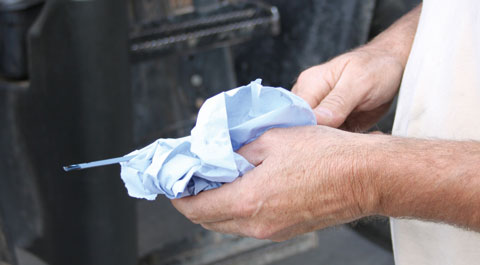
With the engine now off, remove the dipstick, wipe and dip again to check the oil level is within the region of the maximum mark.
Look also at the oil’s colour and check for any burnt smell, which could indicate serious engine issues.
As a general rule, remember that very few things now cost £100 to put right – the likely cost of most things once labour and 20% VAT has been factored in is more likely to be closer to £1,000, however seemingly simple the issue.
Look around the engine and the transmission housing to see if they have been apart during any time in their lives, and to look for replaced components.
Spanner marks on bolt heads often provide a good clue.
If there is clear evidence that the machine has had major surgery, ask why, when and what was done.
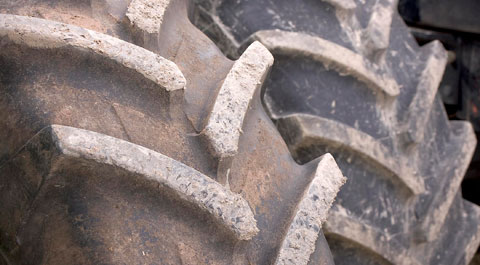
Check the tyres all round, not only for general wear, but for cuts, splits, abrasions and any tell-tale bulges that could indicate serious structural issues.
If the tractor has been fitted with a cheap replacement make of rubber, it can say a lot about the way in which the machine has been cared for generally. As well as the tyre surfaces, ensure you check the inside and outside sidewalls of each tyre.
In terms of tread, anything below 25 per cent should be regarded as worn, and the replacement cost should be factored in. Remember that a new set could add around £2,500 to your costs.
Under the bonnet, check the condition of all belts and look for any signs of untoward servicing, wear or oil.
Ensure the belt on the air conditioning compressor is in good order, and remember that repairing an air con system can be costly simply because leaks can be hard to find.
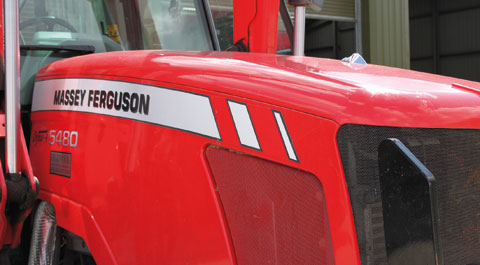
In terms of general cab condition, a well-cared for cabin will tell its own story – as will a tatty one. Look to see if the seat has been replaced, and check the general fit and finish of headlinings etc.
Excessive wear on particular controls can show what a machine has been up to, as can the state of the pedals – a smooth brake pedal surface should ring some alarm bells.
Our example tractor is equipped with a Massey Ferguson 955 loader. If buying a loader tractor, check that all is square and straight, that the arms are levels and that the loader lifts evenly.
Also check the condition of pins and bushes. And while we’ve already mentioned front axle checks, these are doubly important on a tractor that is or has been fitted with a loader.

